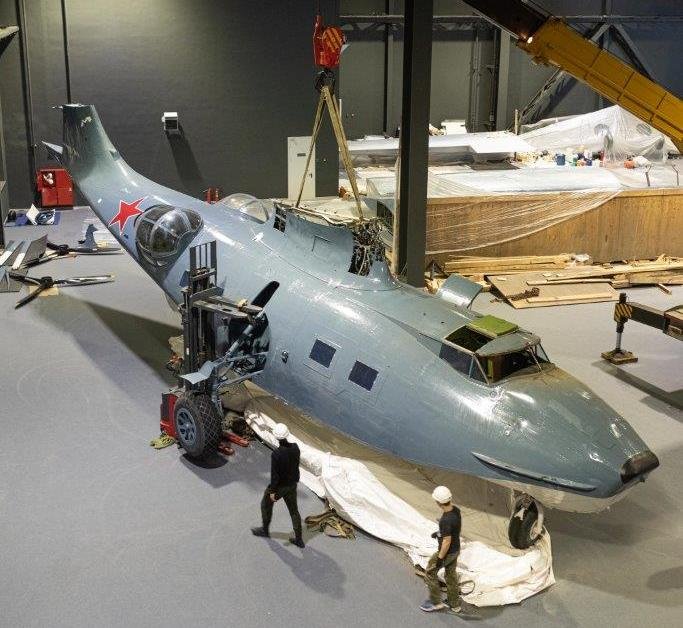Verkhnyaya Pyshma (Sverdlovsk Region)
The American Catalina seaplane, which was supplied to the Soviet Union under Lend-Lease, will become the largest exhibit at the new Wings of Victory exhibition center of the UMMC museum complex. The new equipment was brought to Russia disassembled and is now assembling its main elements. The most difficult process is the installation of the wings, the span of which exceeds 30 meters. A powerful crane was used to hang the planes. In terms of its dimensions, the transport seaplane has bypassed other exhibits of the Wings of Victory exhibition center, which is planned to be opened for Victory Day.
PBY "Catalia" - 19-meter naval aircraft from the Second World War. Named after the island resort of Santa Catalina off the coast of California. Serial production of this aircraft in the USA and Canada began in the 30s. Before the start of the war, a small batch of these machines was also produced in the USSR under license, but the Soviet Navy received most of the Katalin under Lend-Lease. From 1944 to 1945 137 American seaplanes entered the Soviet Union. They were used to locate enemy submarines, in search and rescue operations and to transport goods. “In terms of its flight characteristics and, especially, in terms of onboard radio and instrument equipment, the Catalina was the most modern seaplane in Soviet naval aviation,” says Ivan Silchenko, a researcher at the UMMC museum complex.
Flying boats were in service with the USSR Navy until 1956. They were subsequently written off and disassembled. The seaplane delivered to Verkhnyaya Pyshma is the only Catalina in the whole of Russia. You won't see it in any national museum today.
A separate exhibition center has been built for historical aircraft on the territory of the UMMC museum complex. It will be opened for Victory Day. “Private museums in Russia have never presented anything like this to their guests. Four dozen Soviet and American planes from the Second World War, the very planes that made it possible to defeat Nazi Germany, will be assembled under one roof, ”says Viktor Sevostyanov, director of the UMMC museum complex.





